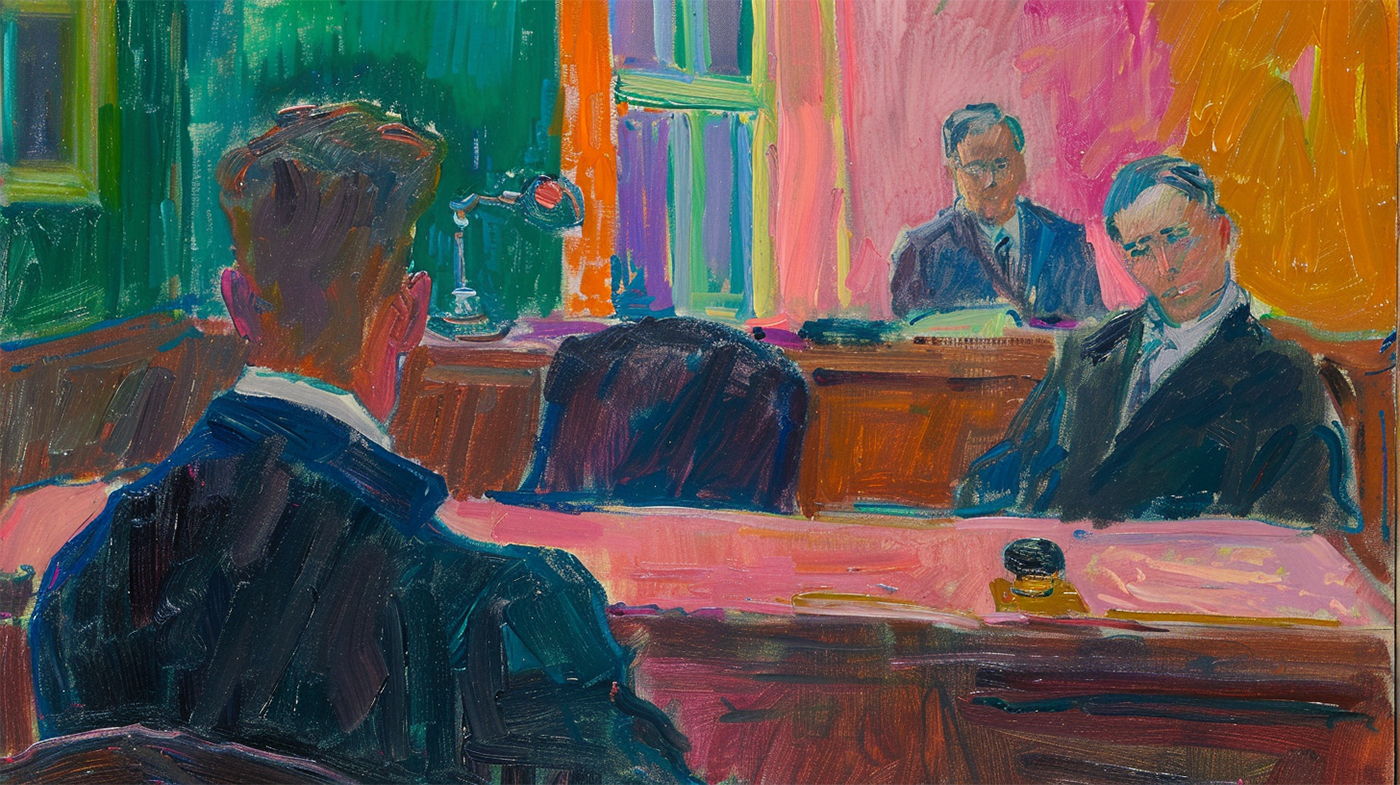I was a member of the Kuala Lumpur Bar from 1999 until 2008 when my father decided to move the firm from Bukit Damansara to Mutiara Damansara. Since mid-2008 I have been a member of the Selangor Bar.
Regardless where my office was or is located, my practice has primarily been based out of the Kuala Lumpur, Selangor (even then mostly Shah Alam and previously Ampang) and Putrajaya courts. I think of these areas collectively as the ‘Klang Valley’ (the KayVee) and so naturally, I think of myself as a KayVee Lawyer instead of a Kuala Lumpur or Selangor one.
Of course, I conducted cases in other states. As a litigator, that is unavoidable. To date, I have conducted cases in all the Malayan Peninsular states except Terengganu. Why not? I just never had to sue or defend anybody there. Much of my travelling was during the first half of my practice. I travel much less these last few years because most of our cases and work are KayVee-valley-centric.
In my experience, there is a general difference between a KayVee lawyer and a non-Kayvee lawyer, and that same difference applies to KayVee courts and non-KayVee courts. That difference lies in their strictness of approach to compliance with the procedural rules (previously contained in the Rules of High Court 1980 and the Subordinate Court Rules 1980 which were then replaced with the Rules of Court 2012).
There are generally two positions with regard to compliance with the Rules: there is the mindless approach and there is the mindful approach.
Those that adopt a mindless approach often rely on the following Malaysian classic case and dicta in respect of non-compliance with the Rules.
The Rules of Court must prima facie be obeyed, and in order to justify a court in extending the time during which some step in procedure requires to be taken there must be some material upon which the court can exercise its discretion. If the law were otherwise, a party in breach would have an unqualified right to an extension of time which would defeat the purpose of the rules which is to provide a time table for the conduct of litigation.
Privy Council decision of Ratnam v Cumarasamy & Anor [1964] All ER 935
The courts that adopt the pedantic approach often rely on that starting phase in the passage to justify their decision to strike out something (an affidavit, an application, an appeal, etc.) for breaching the Rules even though the other litigant(s) suffered no prejudice as a result of that breach, and that breach has nothing to do with the merits of the case.
It is non-compliance with the Rules that harms or prejudices no one.
And yet, the court that takes this approach often takes a wildly disproportionate response to the breach by rejecting it instead of having the offender pay cost and move on from the infringement so the matter can be heard on its merits.
Some call this the ‘strict approach’, I call this the mindless approach because no thought is given to the justice of the case or the justice between the parties.
The mindful approach is typified by Order 1A of the Rules of Court 2012.
In administering these Rules, the Court or a Judge shall have regard to the overriding interest of justice and not only to the technical non-compliance with these Rules.
Order 1A of the Rules of Court 2012.
An articulation of what that means was described by Gopal Sri Ram JCA:
Lastly, there is the question of the modern approach to the breach of procedural provisions by a litigant. It is to be emphasised that the courts are concerned with the dispensation of both procedural and substantive justice according to the merits of a given case. So, when a party to litigation complains of breach of a procedural provision by his opponent, the primary question is not whether the particular provision is to be regarded as mandatory or directory according to the terms of the language in which it is couched. The correct question that the judicial arbiter should ask himself is this: What injustice has the party complaining suffered by reason of the procedural breach? It is the answer to this Question that will ultimately determine whether the court should uphold or reject a procedural complaint.
Chong Keat Realty Sdn Bhd v Ban Hin Lee Bank Bhd [2003] 3 CLJ 532
So unless the non-infringing party can demonstrate how he or his case was prejudiced by the infringement, the court should not entertain the objection or dismiss it. Or punish the infringing party with costs.
Some call this the ‘lenient’ approach. I call it the mindful approach because the court must be mindful of the justice of the case and whether actual (and not imagined) prejudice has occurred before deciding the objection.
Those from the KayVee are likelier to be of the mindless variety. A Kayvee lawyer often would make a big deal about procedural non-compliances where no one suffered prejudice and demand the infringing party be punished with something struck out or the infringing party barred from doing something. A Kayvee court is likelier to strike something out for non-compliance with the Rules.
Those outside the Kayvee however are likelier to be of the mindful variety. They are less likely to demand something be struck out for mere non-compliance with the Rules. A non-Kayvee lawyer is likelier not to raise silly technical objections in a legal proceeding. A non-Kayvee court is likelier to give the breaching party further opportunity to comply with the Rules.
That is one general distinction I discern between Kayvee and non-Kayvee lawyers and courts. That was brought home to me when I acted for a Defendant in a matter in the Ipoh High Court early in my practice. My client was sued for a breach of contract there because both it and the Plaintiff were based in Perak.
The Plaintiff’s lawyer, an Ipoh-based one-man firm, was lackadaisical about preparing the case for trial. At the first case management, the Judge gave the usual directions and deadline for trial preparation, which comprised preparing the bundle of pleadings, the statement of agreed facts and issues to be tried, and the common bundle of documents.
At the second case management, which was about three months after the first one, I complained to the Judge the Plaintiff had not served anything on us. And that was the reason why we could report nothing back at that date. The Judge warned the Plaintiff’s lawyer to get a move on and fixed another case management date for compliance.
Nothing happened.
So, at the third case management, which was also about three months after the second one, I applied for the Judge to strike out the case for contumelious conduct; the Plaintiff still had not even bothered with attempting to comply with the court’s case management directions. He turned up, made his usual apologies and excuses and plea for more time.
Although the Judge acknowledged the non-compliance and chided the Plaintiff’s lawyer, he did not strike out the case. He gave Plaintiff a further chance and with a further three months. At my protestations, I was told that if our client felt strongly about it, file an application.
The striking-out application was prepared and filed soon after.
I drove up for the hearing thinking it was a sure winner. Half a year of not even bothering to comply with the Court’s directions. No reasonable explanation was offered for his inaction. Insincere declarations of intended effort. I mean, at the very least, do the bundle of pleadings lah. If you can’t explain that, you are screwed.
I thought I was going to kill the hearing.
The application was called up before the same Judge.
‘My Lord, this is the Defendant’s application to strike out for non-compliance with the case management directions. The Plaintiff has demonstrated want of prosecution and contumelious conduct in failing to comply with your Lordship’s directions. If your Lordship will recall, the Plain…’
‘I know. I know, counsel. I remember this case. You were here not long ago.’
‘Yes, my Lord. Then my Lord will know that ….’
‘Yes, yes. I know. You want to strike out the Plaintiff’s case because he didn’t comply with my directions. I remember you made the request last time.’
‘Yes. My Lord said that if our client felt strongly about their non-compliance, we should file an application.’
‘Yes, I remember that. So you want to strike out their claim?’
‘Yes, my Lord. It has been more than 6 months since our first case management and we have not received anything from the Plaintiff. We have followed up with them too but they have not been cooperative. We haven’t even received the bundle of pleadings from them.’
The Judge turned to the Plaintiff’s lawyer.
‘Bundle of pleadings pun belum buat?’
Finally! I thought.
The Plaintiff’s lawyer smiled back apologetically to the Judge and said, ‘Yang Arif, I am very sorry. Very, very sorry. I will get it done by this week, Yang Arif. I will comply with Yang Arif’s directions by this week. I will send everything over to my learned friend. I will make sure, Yang Arif. If Yang Arif wants me to give an undertaking also, I am prepared. Yang Arif can have my word on this.’
The Judge seemed satisfied with that response. He turned back to me.
‘Ha, so? He will give you everything this week, Encik Fahri. Do you still want to proceed with this application?’
‘I… I, my Lord, have no instructions to withdraw. My instructions were to proceed with the application since the Plaintiff has not furnished anything until today.’
‘Yah, yah. But he promised to do it by this week. This week you will have everything.’
‘Yes, my Lord, but this should have been done at least 6 months ago.’
‘You are complaining about what they didn’t do. Now they are going to comply. Why don’t you give them a few more days? Then you can respond to what they send you. If I strike out now then they can re-file again. Buang masa.
‘My Lord, if I may. A party who has been found to be in contumelious conduct cannot re-file their matter. They are barred, my Lord. The authority fo….’
The Judge looked at me wearily.
‘Encik Fahri, this is Ipoh. That is not how we do things around here. Sikit-sikit strike out. Sikit-sikit strike out. This is not KL, Encik Fahri. I know you all there, sikit sahaja non-compliance, strike out. Late one day, strike out. That is KL lawyer style. But we don’t do that here, Encik Fahri. We are not like that. Your learned friend already said he is going to comply by this week. If you want, you can withdraw and I can give you no order as to costs. But if you fail in the application, there will be costs. So what do you want to do now, Encik Fahri?’
The message was clear.
‘I withdraw the application with no order as to costs. My lord, I request for it recorded that my learned friend will send what he is supposed to by this week.’
‘Of course.’ He turned to the Plaintiff’s lawyer. ‘Any objections?’
‘No, Yang Arif.’
‘Okay. Application struck out with no order as to costs. Ah, you, make sure everything is sent to Encik Fahri by this week. More than 6 months is too much. This is your last chance.’
The drafts and documents came to us within the week as undertaken.
Related Posts
- The Death Penalty
Are you for or against the death penalty? I have never liked that question because…
- Adducing Evidence after Trial
In a civil or criminal case, all the evidence in support of a civil claim,…
- Judiciary Recorders
Don't worry, I am not pitching to sell the judiciary a new Court Recording and…
- 'Let me tell you the facts of your case.'
I remember the first time I heard my boss say that. I was a young…
- Book Shelving in Malaysian Bookstores
Of this I am certain: most staff in Malaysian bookshops are not readers. By readers…






